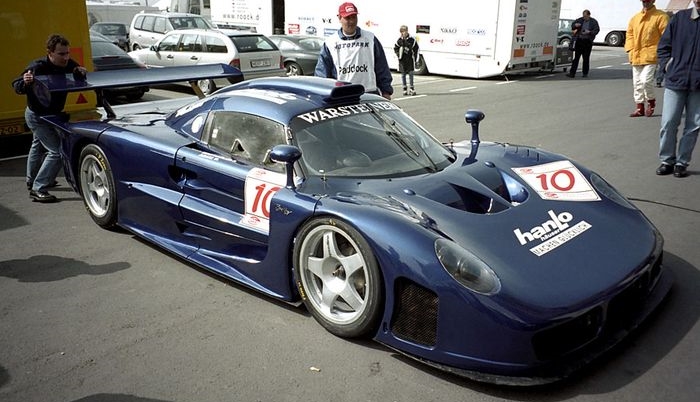
The Bitter GT1 was housed in a Dodge Viper V10 clubbed to a lotus chassis.
With 620 horsepower now on tap, the car was only marginally more powerful than the old Chevrolet-powered Lotus, but the Chrysler unit churned out mountains of torque.
January 11 ,2019
The Bitter GT1 was a gung ho project set up by two extravagantly entrepreneurial individuals. Together, Mike and Toine Hezemans imagined themselves to be on par with Enzo Ferrari and Colin Chapman, and hoped to create a substantially successful GT-racer with just a few simple tweaks.
Former factory driver Mike Hezemans of the Netherlands, feeling that the Elise GT1's main faults were in its power and aerodynamics, decided that the car should not be abandoned and convinced his father Toine Hezemans to provide financial help in his project. The pair bought two former Elise GT1 chassis abandoned by the factory along with their inventory of parts. Hezemans and his small team consisting of chief mechanic Hans Willemsen and two mechanics, Peter Classen and Mario Van beek, set out to eliminate the known faults in the car. They took the chassis to the Netherlands and in their small workshop, the car was extensively reworked. The front end was made longer and smoother in an attempt to increase front downforce. To replace the Elise GT1's Chevrolet V8, Hezemans turned to Chrysler, buying a pair of 356-T6 8.0L V10s producing 620 hp and 800 Nm of torque, which were being used in Chrysler's GT2 class racing cars. The engine was fitted in the car by extending the chassis. The Hewland gearbox was retained as the team had a small budget. The new cars were promised to compete in the 1998 FIA GT Championship season. In order to make the cars compliant to the regulations of the FIA, Hezemans turned to his friend Erich Bitter who was an independent German car manufacturer. He agreed to give the cars his firm's name and the car were named Bitter GT1s.
The cars never matched even the lackluster performance of the original Elise GT1s. The only race in which they actually competed, Silverstone, saw both Bitters failing to finish, as the torque produced by the new V10 engine was too much for the gearbox. After failing to even get past initial practice at the next race at Hockenheimring, the project was cancelled. By using the generally very good Lotus Elise GT1 chassis, the pair thought an aerodynamic overhauld and a gigantic Chrysler V10 would be more than enough to kick sand in the eyes of the dominant Germans. Unfortunately the reality was very different. In fact, the big V10 worked its prehistoric magic a little too well, grinding up any transmission it came into contact with. This problem was enough to dissolve the team’s tiny budget, which received a further blow after the shoddily prepared customer car burned to the ground.